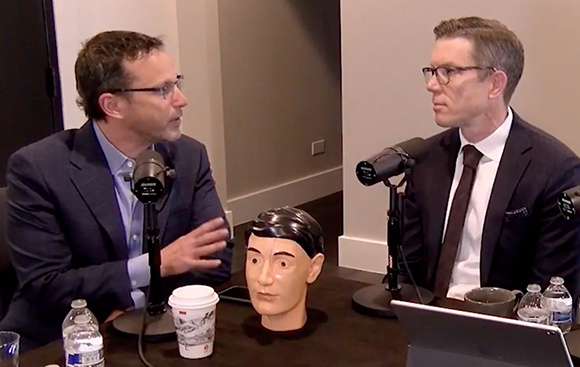I recently had the honor of being asked to do a podcast with well known Board Certified plastic surgeon Dr. Jason Martin. Dr. Martin has a podcast called Beauty and the Surgeon which discusses all aspects of plastic and reconstructive surgery. I’ve known Dr. Martin for quite some time, dating back to when I was on the Board of Directors of the American Society of Plastic Surgeons, and I was in charge of educational programs for young plastic surgeons all over the country.
Watch
Listen
Dr. Martin has a robust and diverse practice in Colorado, and when he heard about the amazing effectiveness of migraine surgery, he asked me if I would spend some time with him and his assistant Amy to discuss the hows and whys of nerve decompression. He wanted to talk about my experience with migraines over the last forty years, and the improvements we have made in the lives of patients with migraine and occipital neuralgia pain. Needless to say, I was very excited about the opportunity to spread the word and discuss these amazing procedures.
I can’t say I’ve ever done a podcast before, but I think they are supposed to be around 30 to 60 minutes in length. Once the three of us got talking about my history of migraine pain as well as the way that we can provide relief for migraine sufferers, the time apparently flew by. When we looked up we had been talking for 90 minutes, and the producer was giving us the sign for “you’re done!”
There is so much to talk about when discussing the surgery for migraine patients, but I think we did a pretty good job of describing the type of patient that the surgery works for (most migraine patients) as well as the work up. I brought a model head with me that was supplied by a fellow surgeon from London, Dr. Muehlburger, and I was able to show Dr. Martin and Amy where many of the nerves were, as well as discuss the incisions that we use for the surgical procedures. We actually were videotaped as well as recorded for the podcast, so I’m excited about getting patients both means of enjoying this information.
The opportunity to explain migraine surgery in plain language was very refreshing and hopefully informative. Amy is a nutritional therapist and had some great questions, while Dr. Martin was very helpful in providing a second voice to make certain that some medical words were clear to listeners. For example, when I say a “posterior incision”, he was great at clarifying that the incision for decompression of the occipital nerves in cases of occipital migraines and occipital neuralgia was, in fact, on “the back of the head.”
We reviewed the locations of the nerves above the eye, the supra-orbital and supra-trochlear nerves, and the pain that these nerves can produce in the forehead and behind the eye. The nerves on the side of the head, the zygomaticotemporal nerve and the auriculotemporal nerves are small, and so the model head was very helpful in explaining how these nerves can cause migraine pain and how the surgical release of these nerves can be so effective in treating migraine patients. We discussed the nerve endings in the nose, and why I tend to refer patients with nasal experts to ENT doctors for operations that can help migraine headaches from nasal congestion.
Of course, since many patients with migraine headaches and occipital neuralgia experience pain in the back of the head and neck, we spent a good bit of time discussing the three occipital nerves in the neck and posterior scalp that we decompress very commonly. The fact that all of these nerves that we work with are outside of the brain and so accessible, yet cause pain that seems to be in the brain and within the skull was a major area of discussion.
Both Amy and Dr. Martin were very interested in the concept that plastic surgeons have the expertise to use microsurgical techniques to decompress these nerves. One of the things we discussed as well was that a usual person with a migraine headache would not think that a plastic surgeon could provide a cure for their migraine pain. Similarly, though many neurologists are not informed of how effective migraine surgery can be, we reviewed the outstanding data and really well-done studies that provide convincing evidence that migraine surgery is so effective.
From my own personal history with migraine pain to the development of migraine surgery and the studies that confirm the ability of migraine surgery to provide relief, we had an amazing discussion. We also reviewed the details surrounding the process of the workup for migraine and occipital neuralgia and the subsequent procedures and recovery from migraine surgery. I very much hope that everyone who watches and listens has a great understanding that so many men, women, and children with migraine pain and occipital neuralgia can find relief. Returning to a normal productive life filled with fun, family, and friends is not only possible but even probable following nerve decompression surgery for migraine pain.

